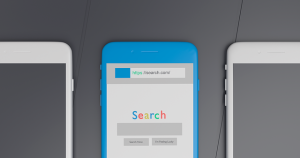Responsive Web Design (RWD) is a crucial strategy for modern web development, enabling websites to adapt seamlessly to various devices and screen sizes. By using fluid grids, flexible images, and CSS media queries, developers create a single design that adjusts intelligently based on the user's device. This approach is essential in today's mobile-first landscape, where most users access sites via smartphones, enhancing user experience, search engine rankings, and reducing bounce rates. RWD ensures consistent satisfaction across desktops, tablets, and smartphones, optimizing performance with dynamic layouts, typography, and imagery tailored to each device. Testing tools like Google Lighthouse help ensure adherence to RWD principles by analyzing layout flexibility, image optimization, and overall mobile user experience.
In the digital age, ensuring your website is mobile-optimized is no longer a luxury—it’s a necessity. With a majority of internet traffic stemming from mobile devices, understanding Responsive Web Design is crucial for businesses aiming to thrive online. This article dives into the essentials of Responsive Web Design, highlighting why it’s vital for modern websites and providing practical tips on layout creation, user experience enhancement, performance optimization, and key tools for testing. By the end, you’ll be equipped with the knowledge to create websites that adapt seamlessly to any screen size.
Understanding Responsive Web Design: The Basics

Responsive Web Design is an approach that ensures a website adapts and displays optimally on various devices, from desktops to tablets and smartphones. It’s no longer about creating separate sites for different screen sizes; instead, it focuses on building one flexible design that responds intelligently based on the user’s device. This method is crucial in today’s mobile-first world, where a significant majority of internet users access websites via their phones.
The basics involve using fluid grids, flexible images, and CSS media queries to alter layout and content for different screen resolutions. For instance, media queries allow developers to apply specific styles when a user switches between a desktop and mobile view, ensuring the website remains readable and usable on all platforms. This adaptability enhances user experience, boosts search engine rankings, and reduces bounce rates, making it a fundamental strategy for modern web development.
Why Mobile Optimization is Crucial for Modern Websites

In today’s digital era, mobile optimization is no longer a luxury but an indispensable aspect of website design. With a vast majority of internet users accessing websites via smartphones and tablets, ensuring your site offers an optimal experience across all devices is crucial. Traditional designs that prioritize desktop views often result in poor usability, increased bounce rates, and lower conversions for mobile visitors.
Responsive Web Design (RWD) plays a pivotal role in achieving this goal. It ensures that a website adapts seamlessly to various screen sizes and resolutions, providing an engaging experience regardless of the device. RWD not only improves user satisfaction but also boosts search engine rankings, as Google and other major engines favor mobile-friendly sites. By embracing responsive design, businesses can effectively reach a broader audience, foster stronger connections with users, and ultimately drive better results.
Key Components of a Responsive Website

A responsive website is one that adapts seamlessly to different screen sizes and devices, ensuring a consistent user experience across desktops, tablets, and smartphones. The key components of such a design include flexible layouts and images, media queries for screen detection, and a mobile-first approach.
Flexible layouts use CSS3 flexbox or grid techniques to create dynamic designs that rearrange content as the screen changes, maintaining readability and usability. Responsive images adjust their size based on the device’s display, preventing laggy loading times and ensuring fast page performance. Media queries, powered by CSS, allow developers to apply specific styles depending on the device’s width, height, orientation, and resolution, facilitating a tailored experience for every user.
Best Practices for Creating Responsive Layouts

Creating responsive layouts is essential in modern web design, ensuring your website adapts seamlessly to various devices and screen sizes. Best practices include using a flexible grid system that adjusts dynamically based on the viewport’s dimensions. Flexbox and CSS Grid are powerful tools for this, allowing content to rearrange itself for optimal viewing, regardless of whether it’s accessed on a smartphone, tablet, or desktop computer.
Another crucial practice is defining clear breakpoints for different screen sizes. This involves using media queries in your CSS to apply specific styles at particular viewport widths. By doing so, you can ensure that your website remains visually appealing and functional across a wide range of devices, enhancing user experience and aligning with the principles of Responsive Web Design.
Enhancing User Experience through Media Queries

Media queries are a powerful tool in responsive web design, enabling developers to optimize websites for various devices and screen sizes. By using CSS media queries, designers can apply unique styles to different display types, ensuring an enhanced user experience across desktops, tablets, and mobile phones. This approach allows for dynamic content adaptation, where the website seamlessly adjusts its layout, typography, and imagery based on the user’s device capabilities.
For instance, a media query might target screens with a maximum width of 768 pixels, triggering a responsive design that stacks content vertically and reduces image sizes to improve loading times. This level of customization ensures that users on smaller devices don’t have to zoom or scroll excessively, providing a more intuitive and enjoyable browsing experience.
Performance Optimization Techniques for Mobile Sites

Performance optimization is a key aspect of mobile website success. One of the most effective techniques is Responsive Web Design (RWD), which ensures your site adapts seamlessly to different screen sizes and resolutions, providing an optimal viewing experience regardless of whether it’s a smartphone, tablet, or desktop. This approach not only enhances user satisfaction but also boosts search engine rankings by addressing key performance indicators like load times and page rendering.
Additionally, leveraging browser caching, compressing images, minifying CSS and JavaScript files, and utilizing Content Delivery Networks (CDNs) can significantly speed up mobile site loading. These strategies help reduce data usage, minimize latency, and create a more responsive and engaging user interface, ultimately driving higher conversion rates and improved customer retention.
Tools and Resources for Testing and Measuring Responsiveness

When it comes to testing and measuring responsiveness in mobile optimization, developers have a plethora of tools at their disposal. These include browser developer tools, which offer insights into element sizes, layouts, and adjustments during different screen sizes and orientations. Popular options like Google’s Lighthouse, for instance, can automatically analyze a site’s performance, including its responsive design capabilities.
Additionally, dedicated testing platforms provide more comprehensive solutions. They simulate various devices and network conditions, allowing for stress-testing a website’s responsiveness under real-world scenarios. These tools generate detailed reports on layout flexibility, image optimization, and overall user experience across different mobile platforms, ensuring that the site adheres to the principles of Responsive Web Design.
